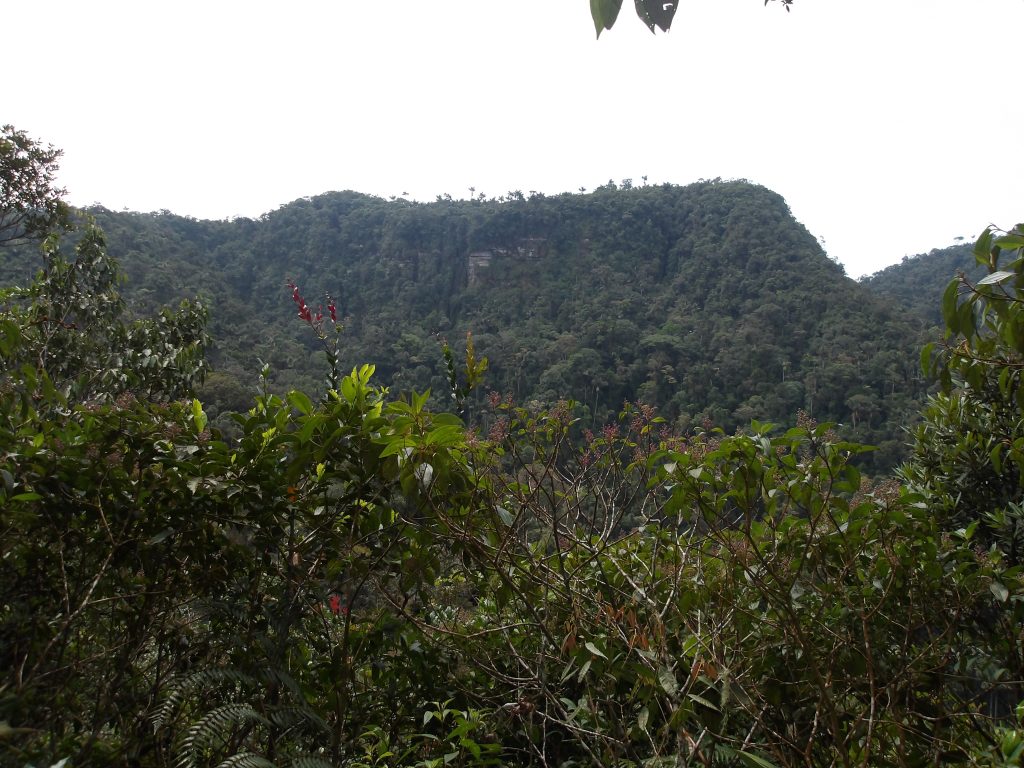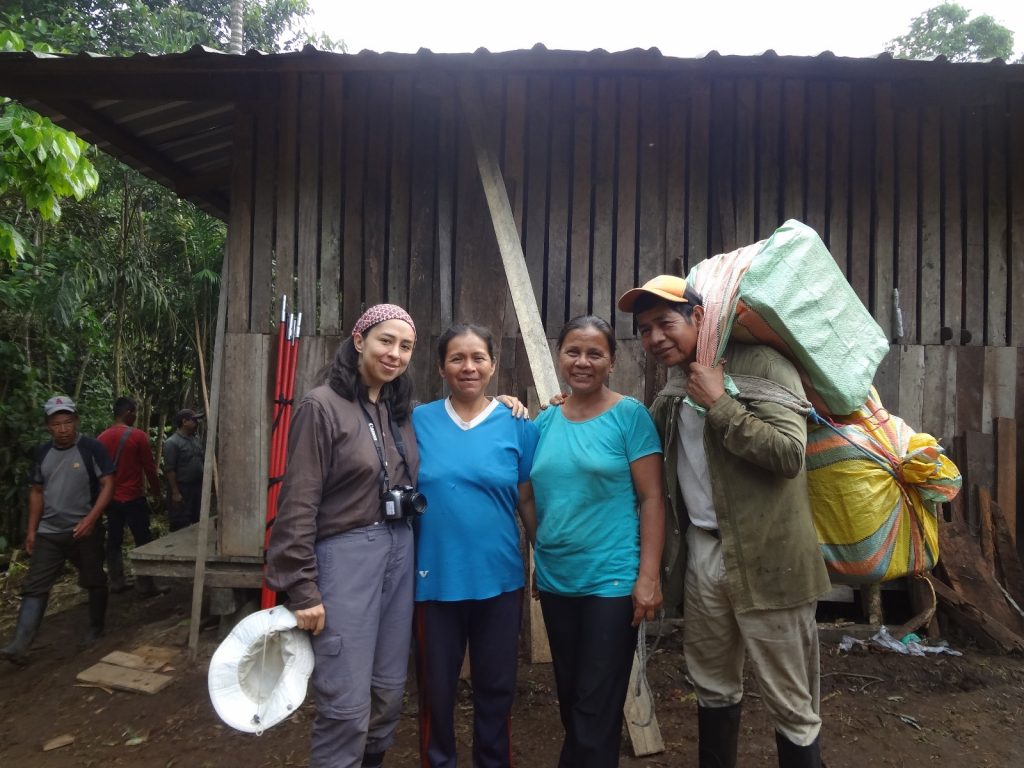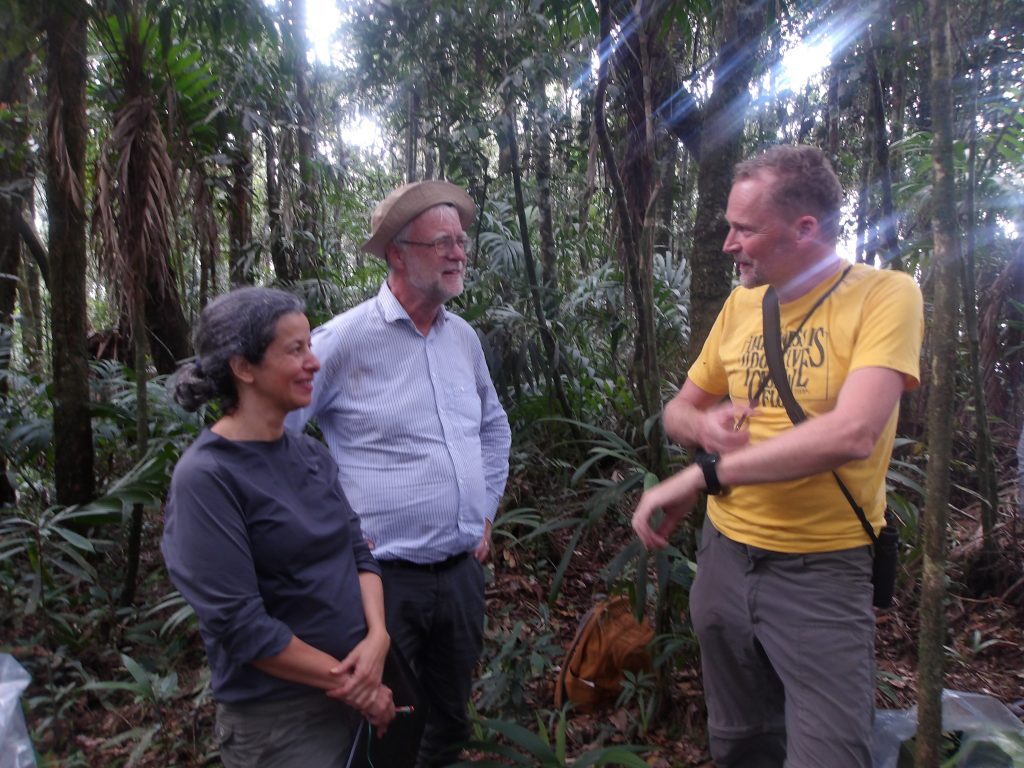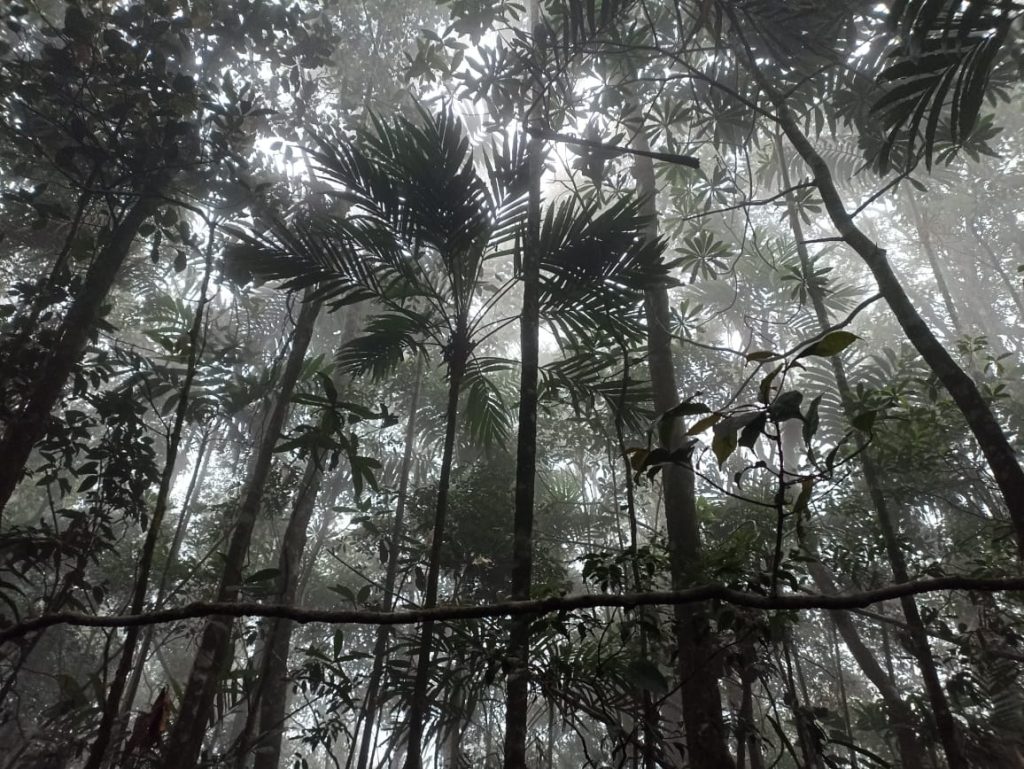Exploring the Forests of Sumaco-Napo-Galeras.

Fieldwork Reflections on the Sumaco-Napo-Galeras National Park
by Andrea Chávez

As part of my ongoing doctoral research on the ecophysiology of forests, I recently had the privilege to visit one of my new favorite places: Sumaco-Napo-Galeras National Park. Nestled in the Andean region, this pristine forest is not only a vital ecological sanctuary but also a space rich with cultural significance, protected and nurtured by the local indigenous communities.
The Purpose: Restablish Research Plots to Understand Forest Dynamics.
The primary goal of this trip was to reestablish long-term research plots that are crucial for monitoring forest dynamics. These plots where stablished 20 years ago and allow us to gather data on tree growth, forest composition, and environmental changes. Our focus was to collect data on tree species diversity, DBH (diameter at breast height), and leaf samples for analysis. Each piece of information contributes to understanding how these forests respond to environmental stressors like climate change.
However, this work was not done alone. I was fortunate to be accompanied by a diverse team of students, taxonomy and forest ecology experts, and the indigenous community of Mushullakta, the true guardians of these lands.
Fieldwork in such a place was challenging for me to organize. Nevertheless, the experience was deeply rewarding. We collected valuable data in this awesome area. The forest itself is stunning – home to towering trees, beautiful understory plants and a beautiful orchesta of bird/insects through the day. I was lucky enough to see a family of Chorongos!.


Space for learning from each other
I’m happy to have the opportunity to work alongside with professors specialized in their field and my colleagues who make my work enjoyable. Many thanks to Jürgen, Selene and Berthil for joining us, helping and teaching us about the trees and plant species in the area. Also, shout out to Alejandra and Karina for their awesome work!. Together we organized this trip and made sure to collect as many data as possible. Also, thanks to the enthusiastic students that join the trip. They worked under the rain and even with a twisted ankle – Jorge, Evelyn, Alberto, Leyli and Vanessa. Thank you.
Lastly, I want to remark how much I appreaciate the help from the Mushullakta community. Thanks to Jose and Mayra through the arrangements. During our days of work, Galo, Javier, Leonidas were key to our success and at night we were really thankful for the food that Mayra, Maria and Klever prepared for us.
I appreciate the time spent with the members of the community. They have an intimate knowledge of the Galeras forest, a knowledge passed down through generations. Their relationship with the land is deeply spiritual, based on principles of balance and respect. As a researcher, I was not just a visitor collecting data; I became an attentive listener of their knowledge.
I have a great sense of gratitude towards them as there was a mutual recognition that we could learn a great deal from each other. They know their forests the best – they recognize the different tree species easily, and they know the sounds of animals, and the paths – where I got lost again. My conversations with them brought reflections about the relevance of our research. Understanding better the forests, and their adaptations are extremely important to the people who call this place home.
Looking Ahead: A Hopeful Return
My team found and established a couple of additional plots to do a census soon. Therefore, I am looking forward to a new visit to collect data. The place is not easily accessible – 7 hours by car from Quito, then 3 hours walking to the campament and then 2 more hours walking to the plots- but the beauty of the forest is marvelous, and the hospitality of its people, and the spirit of collaboration made this trip unforgettable.
I am hopeful about future collaborations with the Mushullakta community, as they are key partners in ensuring the long-term health of these ecosystems. I look forward to the day I can return to continue this vital work, alongside with incredible people that share a passion for conservation.
